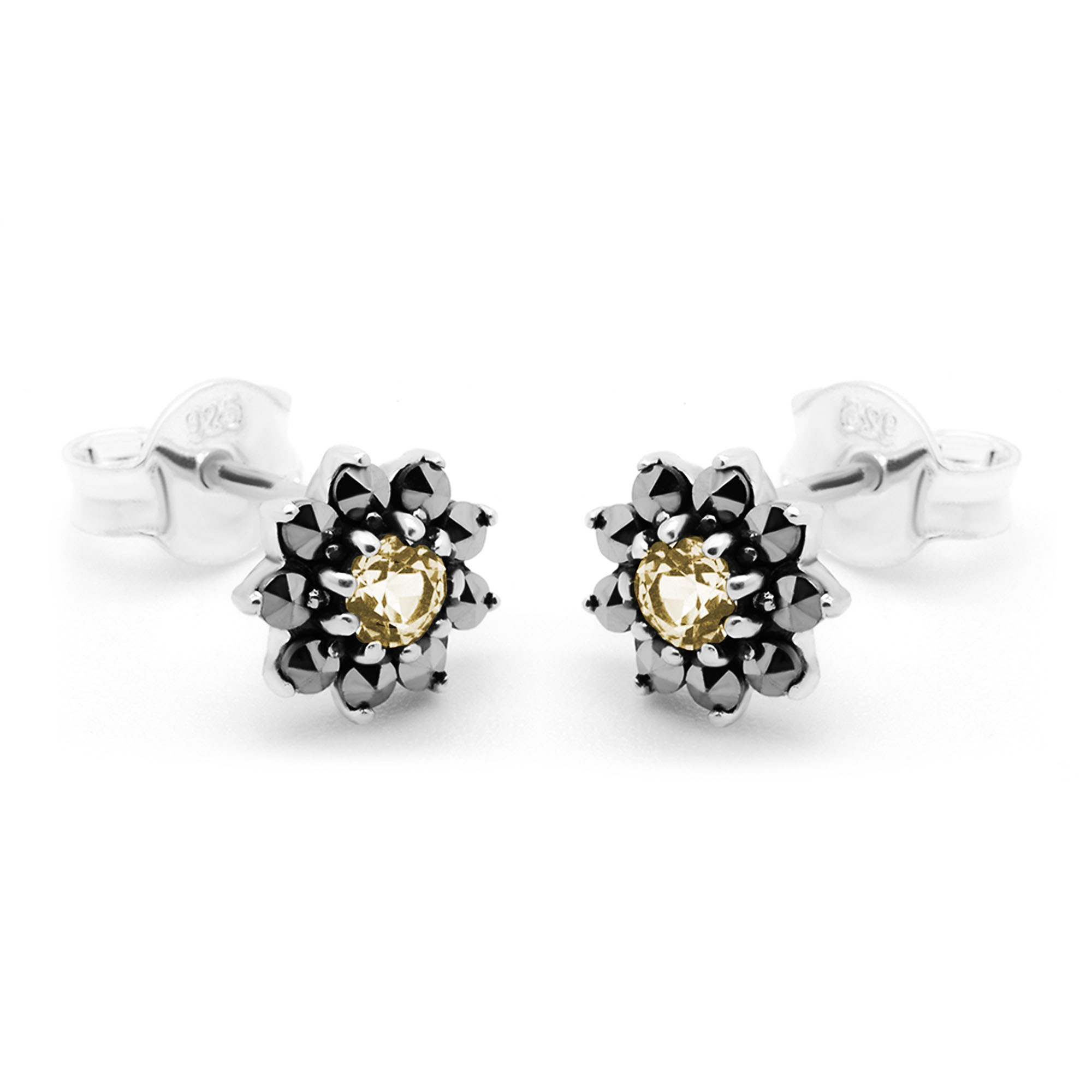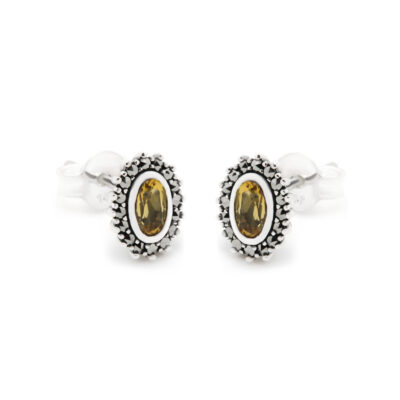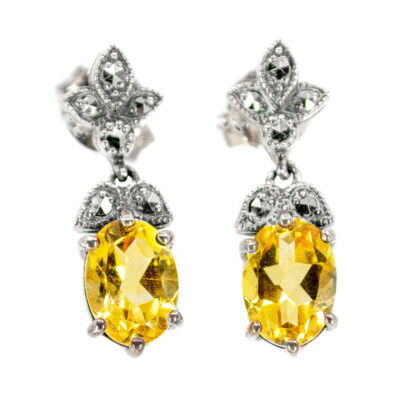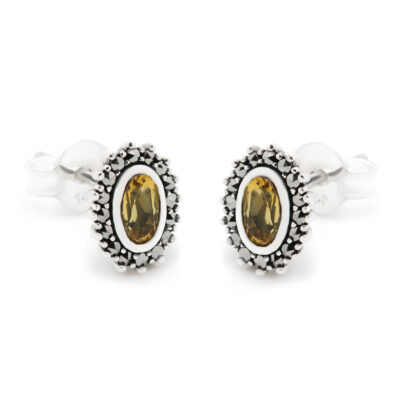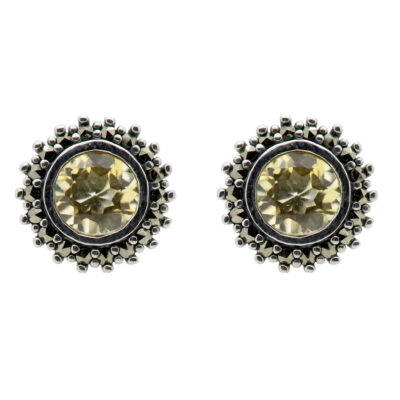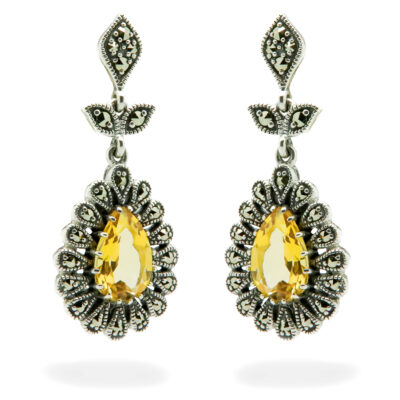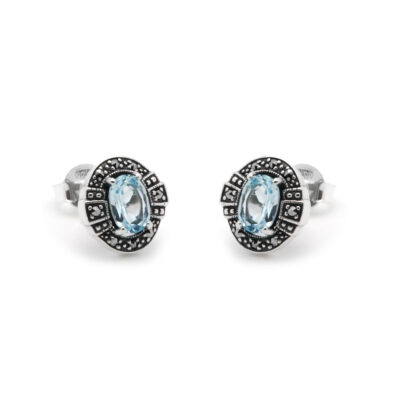These elegant Victorian-design cluster earrings features citrine and marcasite (pyrite).
Details: Citrine, Marcasite (pyrite), Earrings.
Design Era: New Victorian.
Weight in grams: 1.4.
Condition: New.
Shipping and Pickup: This elegant piece ships from our store located in the center of Amsterdam, The Netherlands. We offer both registered shipping and local pickup at our store. In the case of local pickup, any applicable shipping costs will be refunded.
About Us: Add some sparkle to your style with Binenbaum.com. We offer a stunning selection of antique and vintage jewelry that you won’t find anywhere else. From timeless rings and dazzling necklaces to unique brooches, we have something for every taste and occasion. Visit our website today and treat yourself to a piece of history.
| Design Era | |
|---|---|
| Design & Historical Context | The Victorian Era spanned Queen Victoria's rule of England from 1837 until 1901. During this time, a middle class began to emerge, sparking a demand for jewelry in the mass market, jewelry trends often reflected the tone of current events. The era is usually divided into several subsections: the Romantic Period from 1837 to 1861, the Grand Period from 1861 to 1880, and the Aesthetic Period from 1880 to 1901. During the Romantic Period jewelry also featured nature-inspired designs, similar to jewelry of the Georgian era. Frequently, these designs were delicately and intricately etched into gold. Lockets and brooches were popular in daytime jewelry during the early Victorian era, whereas colored gemstones and diamonds were worn during the evening. During the Grand Period jewelry , because the Grand or Mid-Victorian era corresponded with the death of Queen Victoria's husband, many jewelry pieces have solemn, somber designs. Known as mourning jewelry, the pieces feature heavy, dark stones. Jet, onyx, amethyst, and garnet are frequently found in jewelry from this period. Compared to previous periods, Mid-Victorian-era jewelry features highly creative, colorful designs using shells, mosaics and gemstones. During the Aesthetic period, jewelers used diamonds and feminine, bright gemstones such as sapphire, peridot, and spinel. Star and crescent designs as well as elaborate hat pins were also popular. Some scholars believe the aesthetic era began sooner, in 1875, and ended as early as 1890. |
| Key Materials | |
| Materials & Craftsmanship | Citrine: The Gem of Joy and Abundance Citrine, with its warm, golden hues, is a gemstone that radiates positivity, joy, and abundance. This captivating gem is a variety of quartz, with colors ranging from pale yellow to deep amber, often reminiscent of the sun's warm glow. Its vibrant color comes from trace amounts of iron within the crystal structure. Historically, citrine has been treasured for its beauty and believed to carry the energy of the sun, bringing warmth, vitality, and happiness to those who wear it. In ancient times, citrine was known as the merchant’s stone, believed to attract wealth and prosperity. It was also used as a protective talisman against negative energies and was thought to inspire confidence and clarity in decision-making. In modern jewelry, citrine is cherished for its brilliance and affordability. With a Mohs hardness of 7, it is durable enough for everyday wear, making it a popular choice for rings, necklaces, earrings, and bracelets. Citrine's sunny disposition pairs well with both gold and silver, adding a touch of warmth and light to any jewelry design. Citrine is more than just a gemstone; it is a symbol of joy, success, and positive energy. Its radiant color and uplifting qualities make it a beloved choice for jewelry that celebrates life’s bright moments and encourages an optimistic outlook. Marcasite (pyrite): The Gem of Timeless Elegance and Vintage Charm Marcasite, often mistakenly referred to as pyrite, is a gemstone that has captivated jewelry enthusiasts for centuries with its metallic luster and vintage appeal. Although marcasite is technically a form of pyrite, true marcasite jewelry is made from pyrite crystals that are cut and polished to create a shimmering, antique look. Historically, marcasite has been admired for its mysterious, reflective surface, often used in intricate, filigree designs during the Victorian and Art Deco periods. In the 18th and 19th centuries, it became particularly popular in Europe as a more affordable alternative to diamonds, lending an air of elegance and sophistication to brooches, rings, and other accessories. In modern jewelry, marcasite is prized for its ability to add a touch of vintage charm and drama to any piece. Its metallic, gunmetal-gray hue pairs beautifully with silver settings, and its natural sparkle makes it a standout in both understated and ornate designs. Marcasite is commonly seen in rings, earrings, pendants, and brooches, often set in sterling silver to enhance its classic, antique look. Marcasite is more than just a gemstone; it is a symbol of timeless elegance and enduring style. Its historical significance and unique, reflective quality make it a cherished choice for jewelry that exudes both character and sophistication, perfect for those who appreciate the charm of vintage-inspired designs. |
| Gender | |
| Weight (in grams) | 1.4 |
| Condition |
By following these tips, you can enjoy your precious jewelry for many years to come.
Related Products
-
Citrine Marcasite (Pyrite) Silver Cluster Earrings 15708-2290
€ 75,00 VAT incl. (where applicable) -
Citrine Marcasite (Pyrite) Silver Earrings 15318-2077
€ 135,00 VAT incl. (where applicable) -
Marcasite (Pyrite) Topaz Silver Cluster Earrings 16435-2585
€ 75,00 VAT incl. (where applicable) -
Citrine Marcasite (Pyrite) Silver Pendant Earrings 17144-2865
€ 125,00 VAT incl. (where applicable) -
Citrine Marcasite (Pyrite) Silver Earrings 15313-2079
€ 75,00 VAT incl. (where applicable) -
Citrine Marcasite (Pyrite) Silver Stud Earrings 17149-2870
€ 125,00 VAT incl. (where applicable) -
Citrine Marcasite (Pyrite) Silver Pendant Earrings 17128-2851
€ 225,00 VAT incl. (where applicable) -
Marcasite (Pyrite) Topaz Silver Cluster Earrings 16948-2783
€ 85,00 VAT incl. (where applicable)
- Home
- Collection
- Fine Jewelry
- Silver Jewelry
- Silverware
- Boxes
- Candlesticks
- Salt and pepper shakers
- Miniatures
- Salt cellars
- Spoon Set
- Condiments
- Frames
- Napkin Ring
- Spoon
- Oddities
- Cups
- Vases
- Cutlery
- Serving Spoon And Cake Server
- Candlesticks
- Baskets
- Hanukkiah
- Spice Tower
- Yad
- Tea Set
- Sugar Castor
- Napkin Rings
- Wine Bottle Coaster
- Wine Stopper
- Tea Pot
- Jugs
- Rattles
- Hip Flask
- Miscellaneous
- Rings 💍
- About
- Contact
